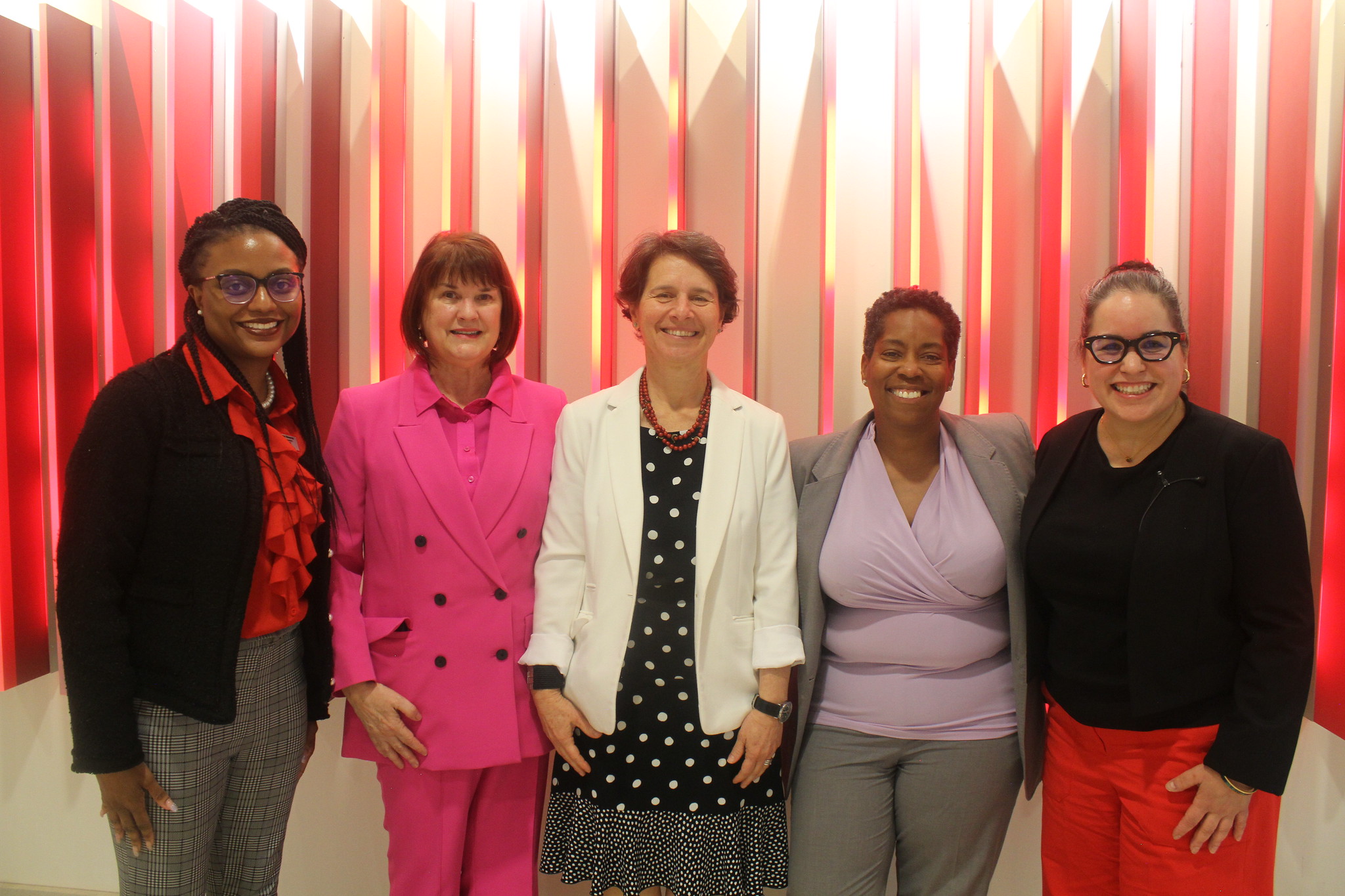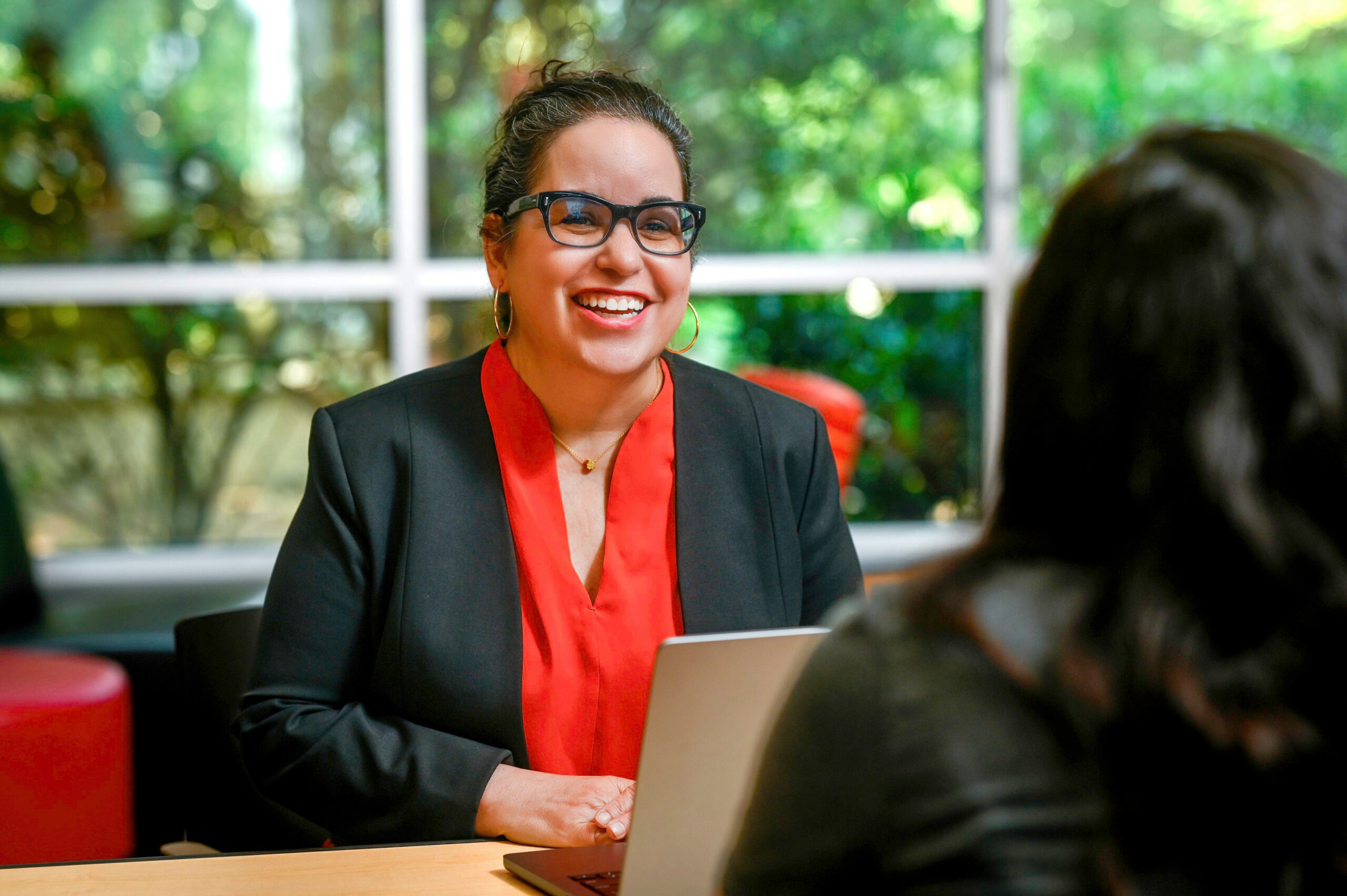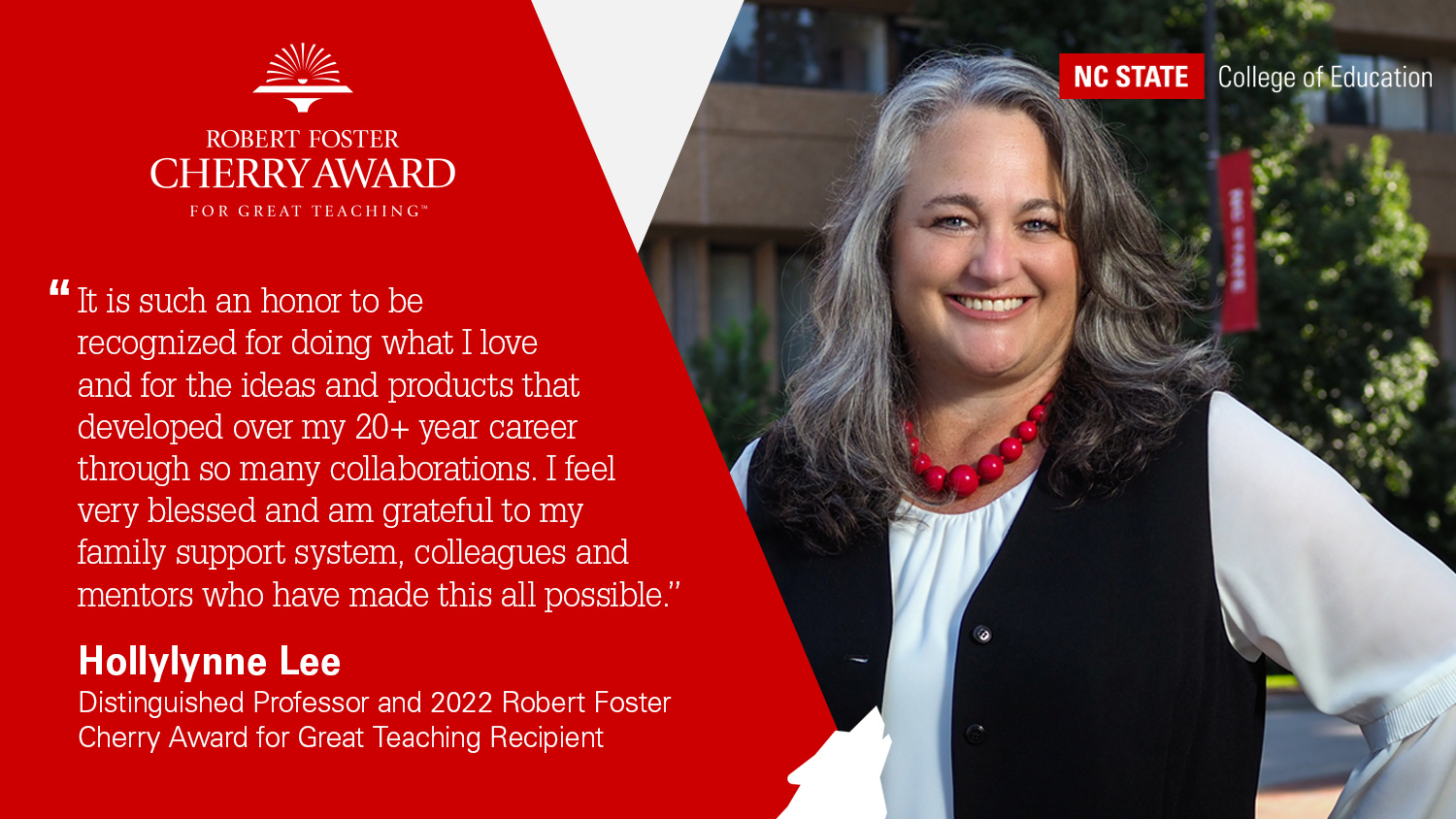Behind the Scenes of North Carolina’s At-Home Learning Initiative

When Angie Mullennix, Ed.D., North Carolina Department of Public Instruction (NCDPI) director of K-12 academics and innovation strategy, called Hiller Spires, Ph.D., Friday Institute executive director and NC State College of Education associate dean, to ask for help to conceptualize and implement the next phase of the At-Home Learning Initiative with PBS NC and NCDPI, Spires didn’t hesitate. “Of course!” said Spires. “What a cool and important project!”
“We were delighted to help design an innovative approach to meeting the needs of NC students who do not have access to the internet,” said Spires. “This project is in alignment with the Friday Institute’s mission.”
The At-Home Learning Initiative was created to help solve remote learning gaps across the state, specifically for students who have a lack of access to a stable internet connection. With funds from NCDPI through the CARES Act, the Friday Institute for Educational Innovation facilitated the creation and implementation of 192 literacy and math lessons for PreK-5 students as part of the initiative for remote education. One hundred and forty-four of those lessons for PreK-3 will air on PBS North Carolina (PBS NC), formerly UNC-TV. Reaching over 5.3 million households statewide on free public television, PBS NC could fill gaps in access through the new Classroom Connection program.
According to the NC Digital Teaching and Learning Inventory, which shares data on school media and technology programs, 203,235 North Carolina public school students, or about 16.9% of North Carolina public school students, do not have stable internet access. This is a little above the 15% national average of U.S. households with school-age children who do not have a high-speed internet connection at home, according to a Pew Research Center analysis of 2015 U.S. Census Bureau data. Usually, this lack of access is due to the internet being cost prohibitive or unavailable where students live.
“This programming is most beneficial for students who do not have reliable and high-quality internet access at home during this period of remote learning,” said Marie Himes, Friday Institute research associate. “However, all of these lessons are designed with the intent to be beneficial for all North Carolina students. We, as educators, know that right now especially, but at all times, we need to have a whole cadre of tools to reach our students, and the At-Home Learning lessons are filling that need right now.”
While other public television stations across the country have launched similar initiatives, they have focused on connecting their existing programming to learning resources or broadcasting teacher-generated content. The partners in this initiative in North Carolina made the conscious decision to create high-quality lessons that will live beyond the pandemic.
“Other stations throughout the public media ecosystem have been doing great work in the at-home learning space,” said David Huppert, PBS NC’s director of the Media Innovation Lab. “We aimed to build on that solid foundation by localizing all our content with North Carolina teachers and standards. We also took a slightly different approach with the production in hopes that the high-quality lessons will have value for teachers and students even after the pandemic.”
All 192 lessons will be available on YouTube for free after PBS NC broadcasts the 144 lessons it plans to air, and lesson plans and accessible extension activities can be found on GoOpenNC. Classroom Connection literacy lessons will be broadcast on PBS NC Tuesday and Friday mornings from 8-10 a.m., starting Feb. 2, and math lessons will join the lineup in March. Lessons will be paired with PBS Kids programs. To view all specific air times for Classroom Connection, visit PBS NC here.
“Going back to my own days as a teacher in a technology demonstration school, I would often use snippets of a video to introduce or enhance things that I was already doing real time in the classroom and also in virtual settings later on in my career,” said Jessica Hunt, Ph.D., Friday Institute faculty fellow and NC State College of Education associate professor of mathematics education and special education. “So I think the GoOpenNC tool is just going to be really valuable to teachers.”
Building Up to Something Big

Lessons are standards-aligned, 10 to 12-minute segments that were filmed in a studio the PBS NC team created at the Friday Institute. Three cohorts of eight North Carolina educators have designed eight lessons each in literacy or math for grade bands from PreK-5. Two of the teachers for PreK-5 will be teaching their lessons in Spanish, both for math and literacy.
The turnaround for this stage of the project was quick, with the first cohort’s lesson planning beginning in late October 2020 and the first round of filming beginning in early December 2020. Before filming, each educator created their lesson plans, went through three extensive rounds of feedback and revision with a review team of NCDPI consultants and UNC System Literacy Fellows to make sure lessons were closely aligned to standards, and scripted their lessons. In addition to that work, eight lead teachers provided guidance and support for other team members on their grade level disciplinary team.
Each lesson follows a lesson planning template in which teachers initially connect with learners, state what the lesson’s focus is and what supplies are needed, model the instruction and thinking and learning for the students, engage the student in the central activity and finally review what they have learned.
The biggest learning moment for both educators and the review team has been translating lessons that are usually taught face-to-face into broadcast.
“It’s not the same as teaching in the classroom and/or teaching over Zoom because your audience isn’t known and isn’t present when you are in the act of teaching,” said Himes. “That has made us really reflect deeply on how to engage learners in these lessons, so we’ve been looking at a lot of different models of educational television content. The DPI and UNC System Literacy Fellow reviewers have been great at giving the teachers some suggestions to amplify the learner engagement piece. That aspect has truly been collaborative to make sure that these lessons embrace the affordances of instructing over television.”
When designing a lesson for broadcast, teachers were told to not recreate what they would plan for a classroom, but instead to lean into the new tools they had at their disposal in this new environment, including graphics and visual effects. Best practices for design included setting expectations of supplies and what will be taught and learned, reinforcing main takeaways throughout the lessons, giving time for students to think and engaging students in classroom dialogue through the use of stuffed animals or other characters.
Although translating for broadcast is a stretch, in the end, the key to a successful broadcast lesson lies in basic good teaching practices—bringing energy, expertise and passion to your lessons.
“I learned that no matter the platform, good teaching is good teaching,” said Bria Wright, one of the lead teachers on this project and a second grade teacher at Hortons Creek Elementary School in the Wake County Public School System. “Knowing our instructional moves, standards and how to teach the skills best to students translates across multiple means of delivering instruction—face-to-face, virtual or in front of a TV camera.”
The Stars of the Show
The 24 teachers featured in Classroom Connection are from across North Carolina including Charlotte-Mecklenburg, Cleveland, Durham, Johnston, Orange, Wake and Wayne counties as well as Chapel Hill-Carrboro City Schools. Teachers were recruited from previous work with the Friday Institute and PBS NC as well as recommendations from NC State College of Education faculty who work in math education and literacy master’s degree programs. Six of the teachers are part of the Wolfpack WORKS program, including Wolfpack WORKS Director and College of Education Assistant Professor Jill Grifenhagen, Ph.D.
[pullquote cite=”Bria Wright” color=”wolfpackred” align=”alignleft”]I learned that no matter the platform, good teaching is good teaching. [/pullquote]
These educators have not only chosen to work their regular jobs but have also taken on this role wholeheartedly—multi-tasking lesson writing, planning, scripting and filming while handling the challenges of life, including managing families and living through a pandemic. All partners in this initiative agreed that the teachers have gone above and beyond because they know the value and the purpose these lessons will have for students across the state.
“Working with these teachers has really opened my eyes to a whole different aspect of what has to be considered when going into a lesson, given that for broadcast lessons, your students aren’t with you,” said Himes. “Seeing the passion and the flexibility and the expertise that these teachers are bringing to the fore has been very exciting. They are committed. This is not their day job, and to see the time that they’ve been willing to devote to creating quality content has been very humbling.”
Partnership During a Pandemic

Because of the longstanding partnerships the Friday Institute has with NCDPI and PBS NC, the partners in this initiative were a natural fit. Each partner brought their expertise and resources to the project to create something they feel will perpetuate beyond the pandemic. NCDPI provided curriculum direction and feedback, PBS NC supplied pre- and post-production, in addition to filming, and the Friday Institute conceptualized the broadcast lesson format in literacy and math, provided ongoing support during lesson development, and recruited and supported accomplished educators to design lessons and extension activities. The Friday Institute Research and Evaluation team, who are separate from the lesson design team, is providing the evaluation of the initiative.
“This phase would not have happened if we had not had [the Friday Institute] working alongside us,” said Mullennix. “We’ve all learned a lot. It is a big undertaking—larger than what we all imagined. I know for sure that DPI could not have handled doing what the Friday Institute has done and what we had to do to get this work completed. It just wouldn’t have happened without them.”
In addition to handling the challenges that came with building lessons for broadcast, the team also dealt with working and filming during a pandemic. Synchronous lesson reviews happened over Zoom and COVID-19 safety precautions and protocols were put in place for filming at the Friday Institute.
“I remember reading something on Twitter early on that said, ‘We’re in a pandemic working…not working in a pandemic,’” said Huppert. “That realization has been front and center as we navigate through this project. Physical and mental health for the teachers and crew has been top of mind at every stage. We understand what’s at stake—for us, as well as the students—and this is our attempt to do what we can to help our community.”
Further Research
Although educational television programming is not a new concept, the idea of broadcast pedagogy is a new term coined by Spires.“The key differentiator between broadcast pedagogy and teaching in person or even on Zoom is the nature of engagement and interaction,” said Spires. “With a broadcast format, the teacher creates interactions with an imagined audience—in this case, students. So it’s important if teachers pose a question, they must answer the question themselves in order to close the communication loop. In a face-to-face teaching context, a student might answer the question and the teacher would use that response to continue a dialogue within the class. That’s not the case when broadcasting.”Spires and her team will conduct research with the teacher participants of this initiative in order to develop a model for broadcast pedagogy that can be introduced into the professional literature. “The challenge was to design standards-aligned lessons that included engaging content and broadcast pedagogical moves,” Spires said. “The teachers definitely rose to the challenge.”“Due to the COVID-19 pandemic, it’s important we learn from this process and identify key characteristics of broadcast pedagogy so that others across the nation and world can benefit from our research and lessons learned,” said Spires.
A Tele Vision

After months of planning, recruiting, writing, filming and editing, the initiative team is anxiously waiting for their vision to come to life very soon in homes across the state. They have learned a lot along the way—how to build high-quality TV programming and lessons to teach and reach those students who they don’t know and can’t see. With patience, understanding and hard work, this large cross-sector team came together to create something they are proud of and that they believe will make a difference.
“The lessons are super high quality, and I think our teachers are going to be pleasantly surprised at the effort and intention that has gone into this,” said Mullennix. “I think it’s truly going to do what it was meant to do, which is to teach the children who might be at home, and also to fill in for districts’ learning management system, if that’s helpful for them, as they build out that content. I think it’s going to be very well received. I enjoyed watching them. I still like watching them to review them, and I just think everybody has done a great job.”
Beyond the gaps in learning during the pandemic that this project fills, the initiative team sees this programming as a resource for educators and families to supplement and amplify traditional learning experiences.
“My hopes for the impact of this project is that it reaches children, families and educators who need additional resources to help motivate and increase learning in a time where learning looks different than our traditional in-person style of teaching and learning,” said Amanda Gary, a lead teacher on this project and a second grade teacher in the Wake County Public School System.
- Categories:


